Your choice of civilization is one of the first decisions you have to make in Civ 7. There are dozens of different leader and civilization combos you can try, and each civilization leans into their specific victory condition typically. This tier list takes into account civilization bonuses on their own without considering leader combinations, although we will suggest good combos to try for each civ.
The Antiquity Age is all about establishing your empire and setting yourself up to snowball for the rest of the game. It’s currently the most important age in the game, and definitely the most enjoyable.
Antiquity Age Civilization Tier List For Civ 7
Here’s a look at the best civs for the Antiquity Age.
|
Tier |
Civilization |
|---|---|
|
S-tier |
Maya, Greece, Rome |
|
A-tier |
Persia, Maurya, Han |
|
B-tier |
Aksum, Mississipian |
S-Tier
These civilizations have excellent base bonuses and great civic trees.
Maya
The Maya are a scientific powerhouse. They have an excellent unique quarter, the Uwaybil K’uh, which provides a boost of production every time you research a tech. This can scale quickly to help you complete important buildings in the capital.
|
The Palace gains +0.5 Science for adjacent Vegetated Terrain. |
|
+30% Production towards constructing the Mundo Perdido. |
|
Hul’che Unique Unit – Tier 1 Ranged Unit. Can see through Vegetation and ignores movement penalties for Vegetated Terrain. |
|
Jalaw Unique Building – +3 Happiness. +1 Culture Adjacency for Quarters and Wonders. Happiness building. |
|
K’uh Nah – +3 science. +2 Science if placed on Vegetation. +1 Science adjacency for Wonders. |
|
Jaguar Slayer – Scout replacement for the Maya. Can fight unlike other scouts. Can also place Jaguar Trap is invisible to the enemy, which deals 25 damage and halts the enemy unit. |
Even at a glance you can start to see why the Maya are powerful – they just have so many bonuses compared to some of the other civilizations on this list.
The Jaguar Slayer is an objectively better scout, the science adjacency you get from the K’uh Nah are outstanding, and the Hul’che ranged unit is very powerful – especially when you start to dig into the civic tree.
|
Civic |
Unlocks |
|---|---|
|
Lords of Xibalba |
|
|
Rain of Chaac |
|
|
Calendar Round |
|
|
Calendar Round Mastery |
|
Recommended Leaders:
- Confucius
- Himiko (High Shaman)
Greece
Greece is a diplomatic powerhouse that also comes with hefty Combat Strength bonuses for their horde of Hoplites. A versatile civilization with lots of fun combos and flexible victory conditions.
|
+3 Influence per turn on the Palace. |
|
+30% Production towards constructing the Oracle. |
|
Hoplite – Greek unique infantry unit that receives +2 Combat Strength if adjacent to another Hoplite. |
|
Logios – Greek great person which can be trained in the Acropolis. The reward is random, but can be used to create great works, boost tile adjacency, and more. |
|
Acropolis – Unique Greek Quarter which provides +2 Gold on the Parthenon for every city-state you a suzerain of. |
|
Odeon – Greek unique building which provides +3 Happiness and +1 Culture adjacency for Quarters and Wonders. |
|
Parthenon – Greek Unique building which provides +4 Culture and +2 Influence if placed on Rough Terrain. +1 Culture adjacency for Wonders. |
The Greeks have an almost overwhelming number of bonuses. The Hoplites are one of the strongest Antiquity Age units (they get even stronger once we dig into the civic tree.)
The bonus adjacency you get from the Acropolis is huge, and it can quickly turn regular tiles into tiles with impressive yields.
Even the Logios, which provide small but impactful benefits, can increase the yields of tiles, with extra science, influence, and culture.
Let’s take a look at their civic tree.
|
Civic |
Unlocks |
|---|---|
|
|
|
|
|
|
Most of the Greek civics benefit a diplomatic playstyle, although you’re able to quickly turn this Influence gain into sheer military power by stacking city-state suzerainty and getting high-level commanders quickly.
Recommended Leaders:
Rome
Rome is the best military Antiquity Age civilization in the game, closely followed by Persia.
The reason Rome stands above is because of their powerful Legion unit and matching Unique Army Commander, the Legatus.
|
+1 Culture in Districts in the capital and city centers in towns. |
|
+30% Production towards constructing the Colosseum. |
|
Legion – Rome’s unique Infantry unit which receives +2 Combat Strength for every tradition in the government. |
|
Legatus – Unique Roman army commander which can settle a new town once it reaches level three. |
|
Forum – Rome unique quarter which provides +1 Culture and Gold for every Unique Tradition in the Government. |
|
Basilica – +4 Gold and +1 Influence Adjacency for Culture buildings and Wonders. |
|
Temple of Jupiter – +3 Happiness. +1 Culture Adjacency for Happiness Buildings and Wonders. |
Rome’s strategy is to stack up culture and use it to unlock multiple Policy slots for extra Traditions. Not only will these provide general buffs to your empire, you’ll also get stronger and stronger Legions.
This strategy is complemented by Rome’s selection of civic tree technology.
|
Civic |
Unlocks |
|---|---|
|
Unlocks the Temple of Jupter and the Auxilia policy, which provides +5% production towards military units in the capital for every town you currently own. The mastery provides the Bulwark promotion to every army commander for free. |
|
|
|
Legatus Pro Praetore |
|
|
Senatus Populusque Romanus |
|
Rome has so many bonuses across the board that it completely overshadows some of the other civs here. You get free Infantry units when you settle, more settlement capacity than other civs, stronger units, more social policy slots, bonus culture, and even some production chucked in for good measure.
Recommended Leaders:
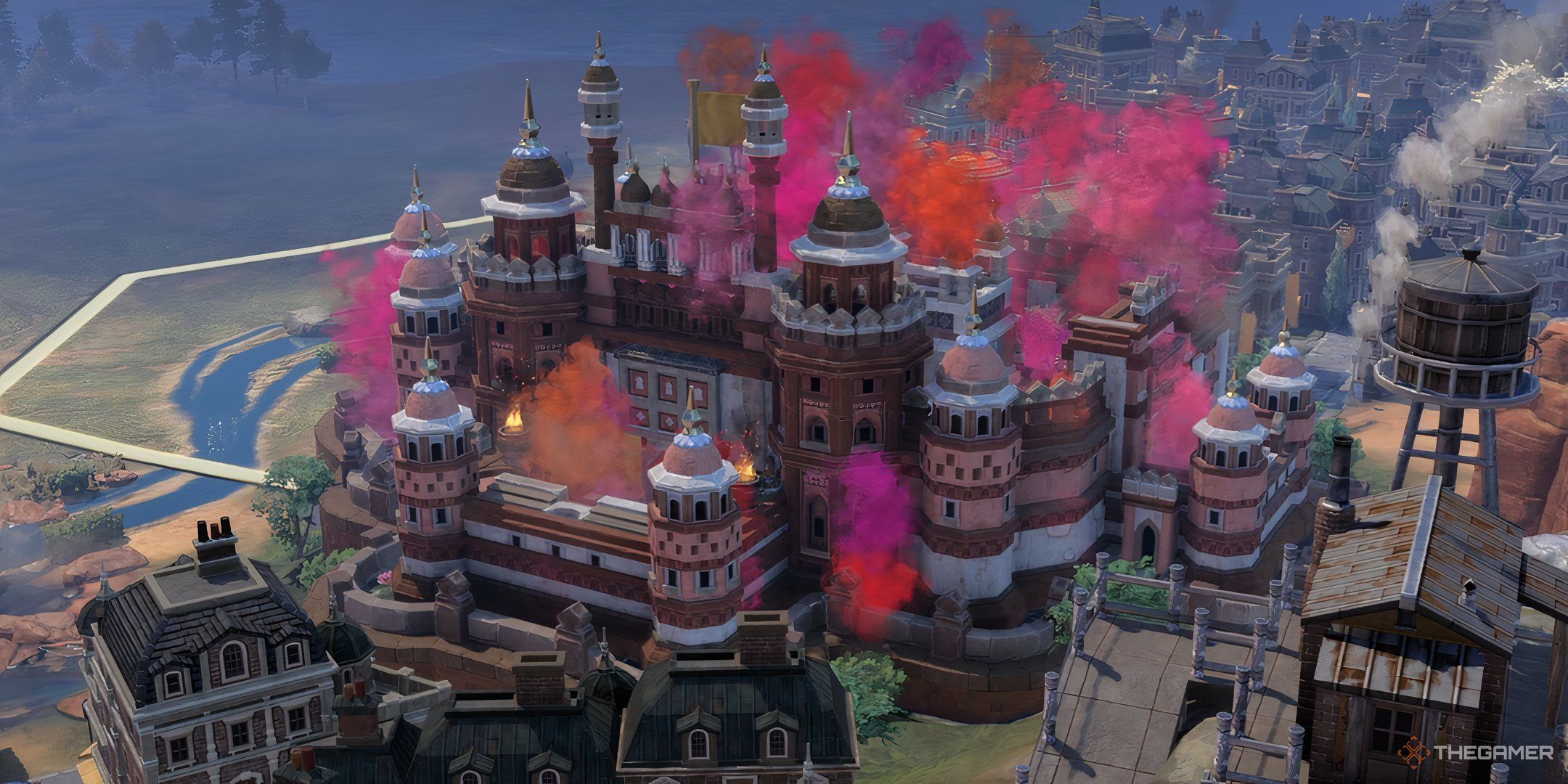
Related
Civilization 7: Celebrations, Explained
Are you ready to party? Here’s everything you need to know about Celebrations in Civilization 7.
A-Tier
Almost at the top, the Persians and the Mauryans just fall short of S-tier.
Persia
Persia is another excellent military civilization in the Antiquity Age, with one of the best units in the game – the Immortal – and plenty of unique narrative events that provide you with a bunch of free units.
|
Infantry units receive +3 Combat Strength when attacking. |
|
+30% Production towards constructing the Gate Of All Nations. |
|
Immortal – Unique Persian Infantry unit that heals 15HP after defeating an enemy. |
|
Hazarapatis – Unique Persian Army Commander which starts with the Initiative Promotion. |
|
Pairidaeza – +1 Culture and Gold. Unique improvement. |
At a glance, you can see why the Persians might seem less powerful than Rome – you get a lot fewer bonuses and options when it comes to the way you want to play, and generally fewer boosts across the board.
However, Persia is still a strong civilization for military domination. The Immortal is an excellent unit that has the best sustainability in the entire game – healing when defeating a unit is very powerful. The Hazarapatis also starts with arguably the best Army Commander promotion.
However, Persia’s benefits are mostly hidden in their tech tree and unique narrative events.
|
Civic |
Unlock |
|---|---|
|
Spada |
|
|
|
|
|
Persia is excellent at building a lot of troops and quickly invading their neighbors. You will, however, struggle to maintain Happiness in these settlements, as Persia doesn’t get the same settlement limit buffs as Rome does.
Best Leaders
Maurya
The Maurya have a great early game boost with that extra Pantheon selection, and they tend to lean into leader combos that require a lot of Happiness. Celebrations (which are generated by the amount of excess Happiness) are very powerful in Civilization 7, hence why we’ve placed the Maurya in the higher tiers.
|
Get an extra Pantheon choice when you research Mysticism. |
|
+30% Production towards constructing the Stanchi Stupa. |
|
Maurya Unique Settler, the Nagarika. Provides +2 Happiness on City Halls. |
|
Purabhettarah unique cavalry unit, which gets +5 combat strength against fortified districts. |
|
Matha Unique Quarter proivdes 10% bonus Happiness in the settlement. |
|
Dharamshala unique building provides +3 Happiness and +1 Science adjacency for Quarters and Wonders. |
|
Vihara unique building provides +3 Happiness and +1 Culture adjacency for Mountains and Wonders. |
You basically get a bunch of Happiness with the Mauryans thanks to that combination of unique buildings and bonuses Happiness from settlers. This is complemented by the civics available for the Maurya.
|
Civic |
Unlock |
|---|---|
|
Acharya |
|
|
Ayurveda |
|
|
Vyuham |
|
|
Mantriparishad |
|
The Maurya have this unique balance between military and Happiness. You get a lot of extra yields from surplus Happiness, but Happiness can be hard to maintain if you’re conquering a lot of settlements and going over your settlement limit. If you are able to find the right balance, the Maurya can be very strong.
Recommended Leaders:
Han
The Han have some interesting bonuses and unique units, but overall they feel a bit weaker compared to the civilizations in the higher tiers. This is mostly due to a lack of powerful tile yields generated by unique buildings and quarters, although, if placed correctly, the Great Wall can be very strong.
|
The Capital and new Towns gain an additional Population with their first growth event. |
|
+30% Production towards constructing the Weiyang Palace. |
|
Chu Ko Nu unique unit, higher base defense strength, inflicts zone of control, and gets +5 combat strength when attacking adjacent units. |
|
Shi Dafu great person which is unlocked when a city reaches 10 population, random great person unlocked. |
|
Great Wall is a unique tile improvement that provides +2 Culture and +1 Happiness for each adjacent Great Wall segment, counts as Fortifications and provides +6 Combat Strength when defending. |
The Chu Ko Nu is a powerful Antiquity Age unit that is ideal for defending your empire against attackers, especially when combined with the Great Wall. We like Han on higher difficulties because the AI are usually war hungry.
The Han also have some decent civic unlocks.
|
Civic |
Unlocks |
|---|---|
|
Zhi |
|
|
Li |
|
|
Yi |
|
|
Junzi |
|
It’s in the civic tree that the Han really start to shine. You get some impressive Influence adjacency and generation as well as even more Combat Strength on your Chu Ko Nu.
Recommended Leaders:
B-Tier
Let down by their lack of bonuses and yields, these civilizations could probably do with some balance tweaks.
Mississipian
Even just taking a look at the Mississipian bonuses without their civics, we can see that they seem to be lacking in useful bonuses. The Burning Arrow might be a great unit, but the unique trader is essentially worthless and the Potkop unique building provides minimal gold and food.
|
All buildings receive a +1 Food adjacency for resources. |
|
+30% Production towards constructing Monk’s Mound. |
|
Burning Arrow Unique Unit – Increased Bombard strength and +3 Combat Strength against Siege Unit. Burns tiles underneath units. |
|
Watonathi Unique Merchant – You get 25 gold per resource in the city or settlement you connect with a trade route. |
|
Potkop unique tile improvement – +1 Gold and +1 Food for adjacent resources. |
In all the hours we’ve played Civilization, we still haven’t seen the AI produce a single piece of siege equipment in the Antiquity Age, which renders the Burning Arrow boost against siege units totally useless. The burning ground effect is neat, though.
The Unique Merchant, the Watonathi, provides a measly gold boost per resource in the city you send a trade route to.
The Potkop doesn’t fair much better – more gold and food. Generally, food is considered one of the weaker resources in Civ 7 because your capital doesn’t need it too much, as surrounding towns feed it.
In terms of the civic tree, the Mississipians do have more to offer – but is it enough?
|
Civic |
Unlocks |
|---|---|
|
|
|
Waahih |
|
|
Cah-nah-ha |
|
Overall, it feels like the Mississipian civilization is a bit confused: it has some great trade potential (unlocking the Monk’s Mound so early is excellent for stacking resources in your capital), but generally, across the board, the bonuses are quite weak.
Recommended Leaders:
Aksum
Aksum is primarily a trading civilization, but their unique unit, the Dhow, is really only viable on certain map types – and that’s even if you can find a coastal city to trade with. Expect to generate lots of Gold, but not much else.
|
+2 Gold on Resources. |
|
+30 Production towards constructing the Great Stele. |
|
Dhow – Unique Naval Unit that has +4 Combat Strength on the coast and 1 charge to create trading route. |
|
Tankwa – Unique trading ship that can’t be pillaged and has an increased +10 trade route range. |
|
Hawlit unique tile improvement – +2 Gold and +1 Culture for adjacent Wonders and other Hawilti. |
We’ve had some fun with Aksum on Archipelago maps but many times we’ve run into some key problems: no cities to actually trade with, and the Deity AI receives so many buffs to combat on water that the Dhow is rendered virtually useless.
Let’s see if it gets any better with the civic tree.
|
Civic |
Unlocks |
|---|---|
|
|
|
Monumentum Adulitanum |
|
|
Book Of The Himyarites |
|
Most of these bonuses rely on your city being on the coast – if it is, then you’ll be able to get a lot of extra gold and potentially some culture. Overall, though, these are still quite weak.
The Dhow, as already explained, isn’t a very good unit – which makes ignoring Zone of Control pointless. The Great Stele isn’t a great wonder as it provides very little bonus (just more gold) and takes up a permanent spot in your city which could be used for more useful tiles.
Overall, a fairly weak showing for Aksum – but still fun to play if you want to build a trading empire.

Related
Civilization 7: Every Type Of Crisis, Explained
Don’t have an existential crisis from not knowing what to expect from a Civilization 7 crisis.





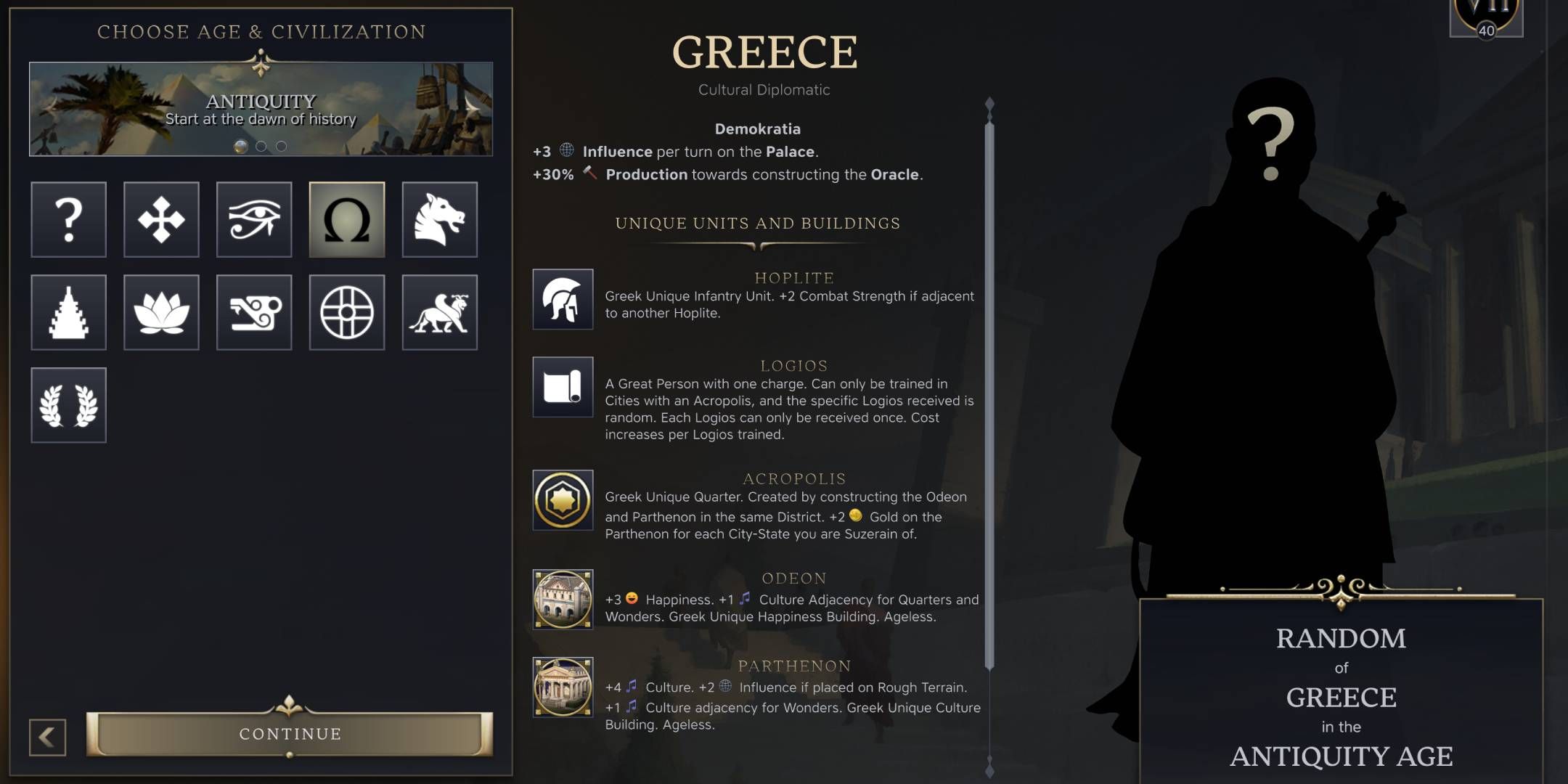
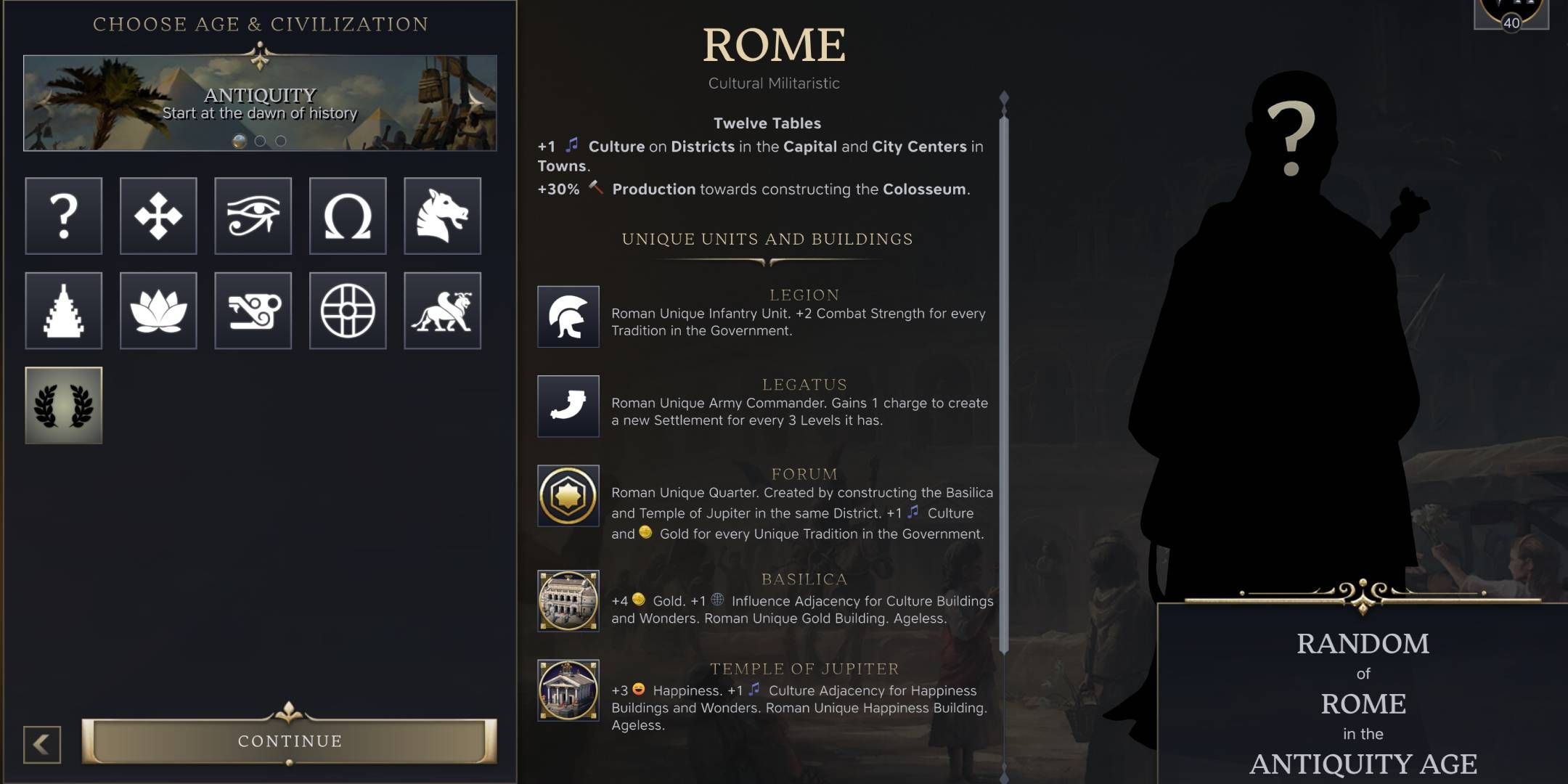

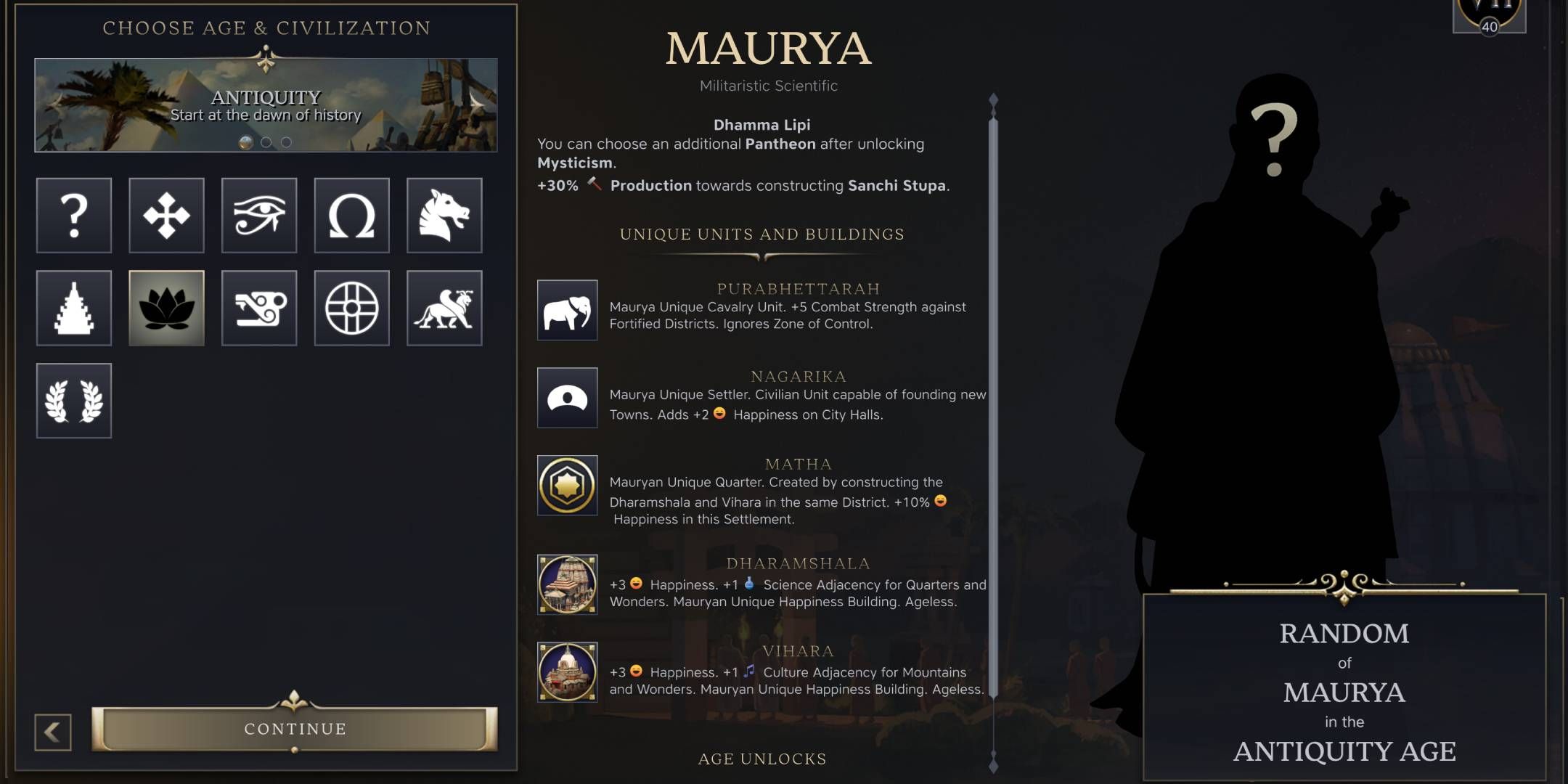
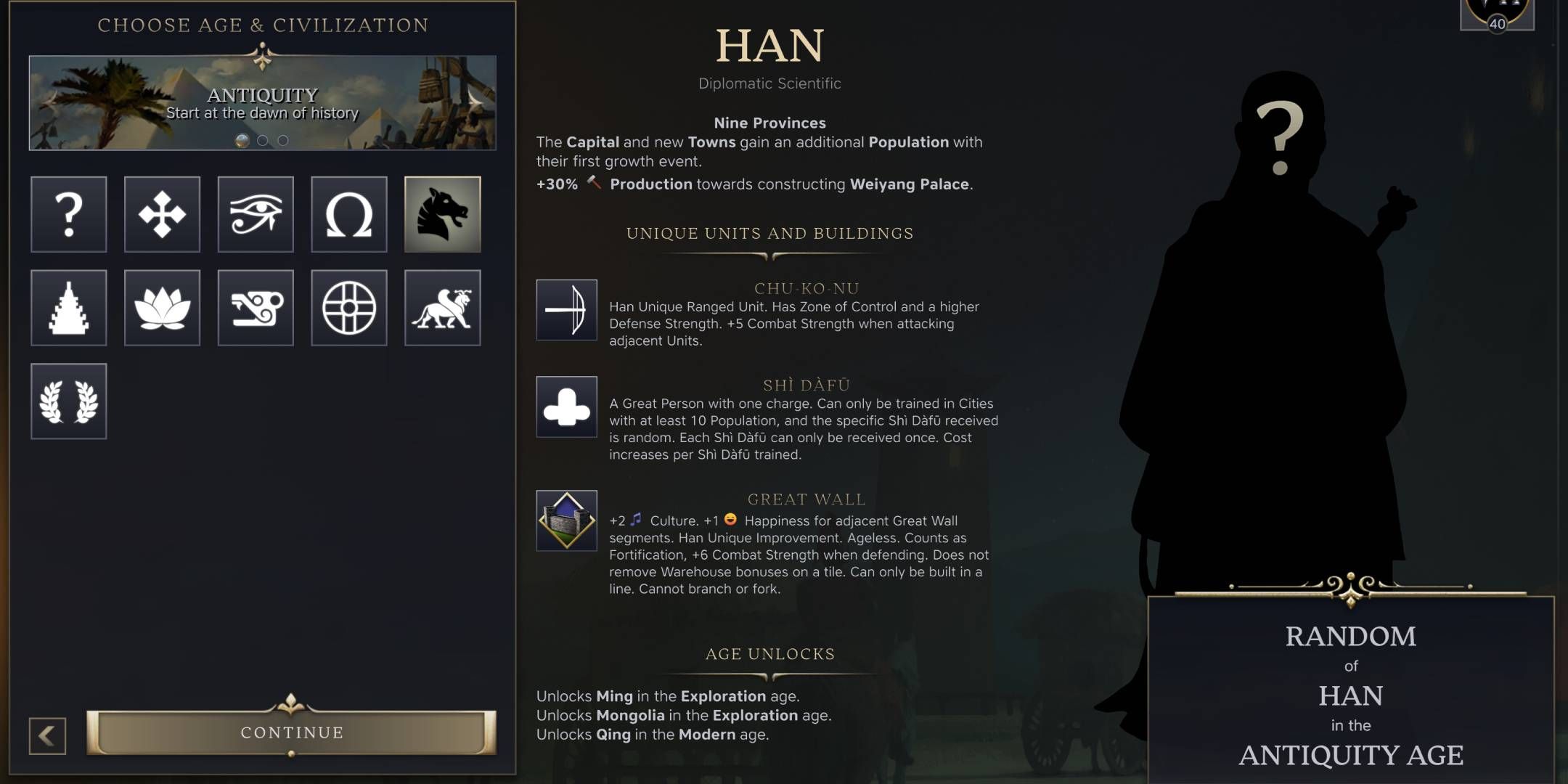

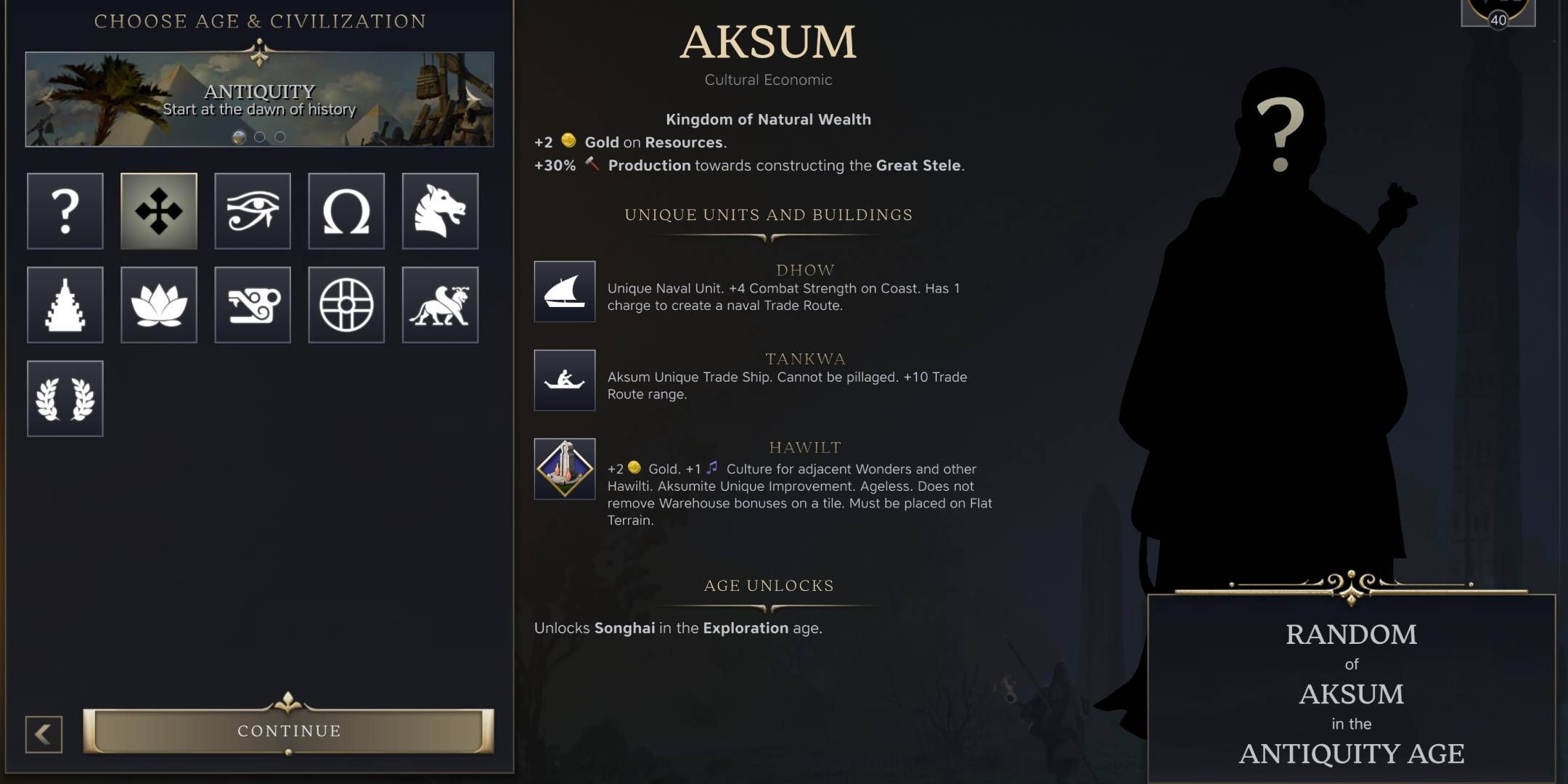









Leave a Reply